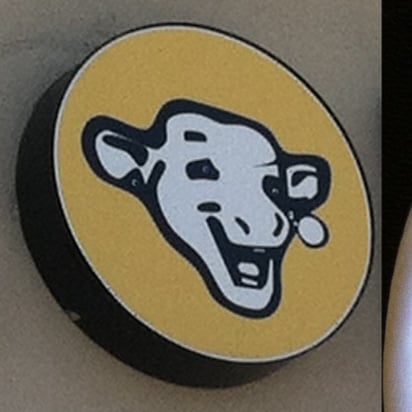Yes, 1 just looks like the bare minimum stamped sheet metal
e
- 1 Post
- 26 Comments

 2·14 days ago
2·14 days agoThe Chinese market already has better EVs than Tesla for cheaper afaik. Teslas don’t sell well there anymore.
If you’ve seen that blue-ness in the sky you’ve seen air.

 3·17 days ago
3·17 days agoI know some people are suspicious of fedora specifically because of its ties with IBM.

 11·17 days ago
11·17 days agoArch also can absolutely be installed just as quickly as any other distro if you use the archinstall script. I used it recently to install KDE plasma onto a Chromebook from 2017 and everything worked exactly as expected, I haven’t had any issues with stability so far. Can absolutely be done in under half an hour. It ofc doesn’t come with the advantage of understanding exactly how your system is set up, like you would if you did it yourself.
The last time I did that (slightly different setup with xfce) though I broke it somehow and ended up with if freezing often when booting, although I’m still not sure if that was a hardware problem or not, but it doesn’t seem to be happening anymore. I also broke something with the audio jack somehow around then during an update, but chromebooks have weird audio drivers and you need to use this script maintained by (afaik) one person in their spare time. Anyways I would expect a framework laptop to handle it better as it’s newer and more common hardware.
I was thinking about this a bit yesterday and I think the most feasible way would be to suspend a glass sheet above the lake, and then give people harnesses with magnets on the top that attach to magnets on the other side of the glass sheet. Then just put ball bearings on both sides to reduce friction.
You could try to use magnetism or something tho, although that means you’d only be able to walk on specially prepared lakes
Unless there’s force coming from somewhere other than buoyancy, you can’t get better than than 1.29 kg per cubic meter of lift in air at stp.
Well, air weighs a little bit more than 1 kilogram per cubic meter, and those balloons look a little bit smaller than a cubic meter
The theoretical best lift from a balloon that size is about 1 kg I would estimate
Well, if we used a pure vacuum, you’d only get about 17% more efficiency than just using helium I think
Any amount of water contact introduces a fair amount of drag. There may be an ideal point somewhere in the middle, but I think if you take this to it’s natural conclusion you get a zeppelin.
I did a little bit of math and I think that to lift the payload capacity (including fuel and crew) of a modern day Panama canal ship you would need about a tenth of the peak U.S. helium reserve (a cube about half a kilometer long on each edge, about 1.3x longer than the long dimension of the ship)
I don’t think you’d get the best fuel efficiency going upwind lol
Anything smaller would come with proportionally less downsides and at least proportionally less benefits. I doubt it could ever be a net positive in any useful metric.
There’s also fedora kde

 1·1 month ago
1·1 month agoDegrees of freedom
3dof things usually just track rotation, because that’s easier. But for a full VR experience, better depth perception, and more normal interactions, 6dof devices are used which track position as well.

 1·1 month ago
1·1 month agoIMO even a normal flatscreen is more immersive on average than a google cardboard, although that’s partially because a flatscreen hides the flaws in the graphics a lot better.
HLA tho needs 6dof controllers for the intended experience. That mod tries to get around it, but that obviously involves some sacrifices.

 2·1 month ago
2·1 month agoIIRC no cardboard ‘headset’ ever had 6dof tracking. It’s about as far as you can get from an immersive VR experience. I say this as someone who bought one before learning about VR and getting a real vr headset.
It’s like VR with all of the downsides, even less apps, and the only advantage over a flatscreen being (limited) depth perception.

 3·1 month ago
3·1 month agoIf you already have a (lower midrange) PC, then yes.

 3·1 month ago
3·1 month agoTrue
it’s doomed now, but I love my Reverb G2, I got it for the same price as a Quest 2 (before the q3 released) and, having used both, its a lot better.

 4·1 month ago
4·1 month agoThe game starts at 60 USD and goes down to 30 pretty often. If you have VR already, it’s not very expensive.



Desmos scientific calculator isn’t open source but it is what I end up using most of the time. It just does float stuff though, it can’t handle something like (10100+1)-10100
It also doesn’t support nearly as many features as the graphing calculator does, for some reason. But it formats everything very nicely and you can copy and paste as latex